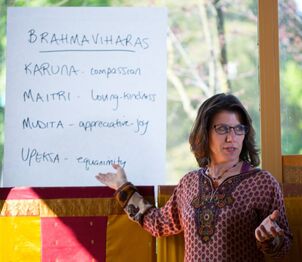Trauma-Informed, Brain-Sensitive (TIBS)
Yoga For Nurses
Created by Sarahjoy Marsh, MA, E-RYT 500, C-IAYT

|
Sustainer; $600:
Your financial resources allow for your to participate at this contribution level. You are providing 4 yoga classes for 10 students. You help us Sustain the Yoga Community inside Oregon’s prisons. Includes a tax-deductible donation of $320 in support of our Teacher Training Programs in Oregon's Prisons. Reciprocity; $460: Your financial resources enable you to participate at this contribution level, yet not more. We understand! Your contribution supports 2 yoga classes for 10 students. We call this Reciprocity because you’re supporting students’ to have access to yoga and we’re honored to discount your training fee by $140 in recognition of your desire to grow your skills and your service. Includes a tax-deductible donation of $180 in support of our Teacher Training Programs in Oregon's Prisons. |
Mutuality; $360:
Your financial resources need careful consideration so that what you invest in is supports you and others, without compromising your financial responsibilities. We understand this! Your contribution supports 1 yoga class for 10 students in Oregon’s prisons. We call this Mutuality because we want to support you to have access to this training and we want to provide you with a discount of $240 payment level that still lets you also support access to yoga in Oregon’s prisons. Includes a tax-deductible donation of $80 in support of our Teacher Training Programs in Oregon's Prisons. Accessibility; $280: Your financial resources need even more careful consideration, yet we know you also want to attend trainings that deepen your skill and help you to serve others. This is our most basic payment option. It covers the cost of the training. This level of registration does not include a tax deductible donation. |
